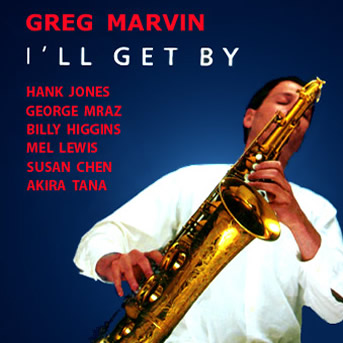GREG MARVINI’LL GET BY
(1) Ding Dong! The Witch Is Dead; Our Angel; Devil’s Dream; I’ll Get By; Over The Rainbow; (2) How Deep Is The Ocean; Old Faithful; (3) 317 East 32nd; Tuesday; Yesterdays; I’m With You (72.09)
(1) Greg Marvin (ts); Hank Jones (p); George Mraz (b); Billy Higgins (d)
(2) As (1) but Mel Lewis (d) replaces Higgins.
(3) As (1) but Susan Chen (p) replaces Jones and Akira Tana (d) Replaces Higgins.
Van Gelder Studios, Englewood Cliffs, NJ, July 14, 15, 16, 1986 and March 3, 4, 1987.
Recording Engineer: Rudy Van Gelder
For an unabashed tenor freak, this spanking new effort by New York saxophonist Greg Marvin is a joy to behold.
In an era so largely dominated by the post-Coltrane school (which I, too, love), it is particularly refreshing to encounter a genuinely new voice who plays with his own brand of integrity as well as with body and soul.
Among the unique aspects of Marvin’s style is his sound. Combining the ethereality of early Getz with the gritty mid-range of, say, a Sims, Marvin uses the entire range of his horn with great dramatic and emotive finesse. I’m also impressed with his long, lyric lines, and his sophisticated sense of swing.
Plying the still fresh waters of the mainstream, but with his own distinct approach, Marvin sails smoothly with such engagingly reframed standards as I’ll Get By and Over The Rainbow, taken here as ballads.
A bracing rendition of Ding Dong! The Witch Is Dead is especially effective as are two Marvin originals, Our Angel and Devil’s Dream, reworkings of, respectively, Angel Eyes and I’ll Remember April.
Also amazing is the superb chemistry achieved by Marvin and his all-star rhythm section of pianist Hank Jones, bassist George Mraz and either Billy Higgins or Mel Lewis on drums. The synergetic mesh is perfection.
Annotator Dan Morgenstern notes that “Marvin makes you believe in the future of Jazz,” to which I can only apend a hearty, “Amen!”
Dr. Chuck Berg
Jazz Times
Originally released as two self produced LPs by the young saxophonist, this CD presents the bulk of those sessions on one disc.
Marvin studied with Lennie Tristano and admires Warne Marsh and that is evident in his soft, lightweight sound, reminiscent of both Marsh and Lester Young. But whereas Warne sought to improvise continually and at length on a limited number of Tristano themes, Greg covers a wide spectrum; there is a world of difference, and variety, between Ding Dong! The Witch Is Dead and 317 East 32nd.
Marvin has a fresh approach, exploring the melodies of the standards sensuously before launching into exhaustive improvisations on the themes; his tone is light and yet strong, vibratoless and he uses long notes tellingly to embellish the tunes. How Deep Is The Ocean is lovingly dissected for every nuance in the melody before he begins to seek and find his own diverse variatons.
Jones and Chen, although very different in their approaches, are both supportive pianists and they add to the success of the dates with their individual solo contributions. All the bass and drum combinations work well with Mraz and Higgins outstanding both in solo and section work.
Greg Marvin’s enterprise and courage has paid off and now his music will be widely distributed; he deserves to be heard.
Derek Ansell
Jazz Journal International
LINER NOTES
Chances are that you’ve come to this album, Greg Marvin’s second for Timeless, by way of his excellent first, (Taking Off!, Timeless SJP 348) for this label. Or perhaps your acquaintance with this fine young tenor saxophonist began with his 1988 effort for another Dutch label, (Workout!, Criss Cross 1037). The least likely scenario is that you’re among the fortunate few who’ve heard the two self-produced LPs, issued in 1986 and 1987, from which the music on this CD has been culled, for it’s in the nature of such records, no matter how worthy the contents, that they get only the most limited distribution. Thus it’s good now to have this music readily available for the first time. Not that producing the LPs was a wasted effort–far from it. Both got excellent reviews, and as with young writers or poets, young Jazz players benefit from these. And in a more essential sense, they document the development of a gifted musician. Greg certainly picked his companions well and he didn’t stint on the engineering, either. Rudy Van Gelder’s state of the art work can now be fully appreciated. And I get to recycle my notes for the second LP, which is the music heard here on the first seven cuts.
When Greg Marvin approached me about doing the notes, I knew very little about him, but hearing his music set me straight. Here was someone who’d clearly chosen a difficult path: the making of music committed to the great tradition of pure, improvised Jazz, with no concessions to commerce and fashion. I was not surprised to learn that Greg had been deeply touched by Warne Marsh’s approach to music, or that he’d studied, as a very young man, with Lennie Tristano.
Not that he seemed like a follower of what’s been called the ‘Tristano school’. There is such a thing, to be sure, but Greg is his own man. “I studied with Lennie less than a year — five months at 19 and another five at 21– and he gave me incredible encouragement, but it wasn’t a heavy ‘mentor’ thing.” he told me at the time. “I got into Warne through his records. We met after Lennies’ death. He was working in and around New York a lot in those days. It was through him that I stuck with my playing and developed a fascination with improvising.”
It was also by way of Marsh that Greg was first made fully aware of the prowess of two of the peerless masters he would later engage for his recording ventures. “Hank Jones and George Mraz were with Warne at the Village Vanguard in the summer of ’83. Hank and Warne had such beautiful communication. And George, too…He’s one of my most favorite musicians on any instrument, of any era. Playing with him is like walking on air. All of the musicians on this date are long — time favorites of mine. Hank was so gracious — he pulled everything together. And Billy played beautifully. I’m also pleased that Mel Lewis came in to finish the record. He lays down a fantastic groove — it feels like it could go on forever.” (How quickly history moves! That great groove of Mel’s is now only to be found on records).
Greg, who made the move to Europe–specifically Holland–in the early summer of 1990, was then back in his native New York (he was born in the big city in 1956) after a five year stint in Seattle. “I really learned to play there,” he said. “But the Jazz scene seemed to be winding down during those years, and it was hard for an unknown to find work. I think that’s a pervasive and very serious problem for young players coming up…club owners are ignoring a vast pool of talent.” That situation has changed only slightly, if at all, since those words were spoken in 1987. But on a brief visit to New York in 1991, Greg told me that Europe is “much more comfortable. I hope to bring a group over a few times a year, and do some more recording when we’ve settled in together a bit.” And Greg won’t have to produce his own records anymore — though he did a fine job. It’s to his great credit that he was able to focus fully on his playing when the red light went on, and that he held his own in such fast company. If there’s one word that can be applied to his conception, I think that word is ‘purity’. Not one false note is struck; there is no posing or striving for effects, no strained attempts to be fashionable. Nothing gets in the way of the music.
The exceptionally well-chosen program for that second LP (I’ll Get By, HI-Hat 1002, for the discographical record)) begins with an unhackneyed Harold Arlen tune seldom used as a vehicle for Jazz improvisation, Ding Dong! The Witch is Dead!. “It really lends itself to bebop lines — a fun thing to play.” Taken at a crisp tempo, the swinging strength of the rhythm section quickly reveals itself, as does Greg’s prowess as an improviser, and his flowing, buoyant time. Hank comes up with his first of many sterling solos, and there is a vigorous Mraz-Higgins duet during which they have fun echoing each other’s phrases. The brief Latin vamp makes for a nice ending.
Our Angel, described by Greg as a ‘theme-less ballad’, offers a clue in the title to its harmonic-melodic derivation. He starts off improvising, backed only by the bass; the other two join in on the bridge. Hank’s lucid solo sustains the warm mood established by Greg, and so does Mraz, with his gorgeous sound and ideas to match, subtly backed by piano. The tenor returns with the bridge for a wistful conclusion, ending with a well-sustained long note.
Devil’s Dream, individual merits aside, is a brilliant ensemble effort. “This was our second take,” Greg points out, “and the band really came together. Billy and George really locked in on this.” (These two had played together before with Tommy Flanagan; Hank and George, of course, have often worked in tandem, and the pianist and Higgins had one previous encounter, in Stockholm). This Marvin composition is based on a standard having to do with memories of spring. “The first four bars I play are written, he comments, “and they’re repeated on the out chorus; you might call this ‘minimalist writing’.” What counts here is the playing: Greg tears it up, Hank picks up the tenor’s last phrase to start his marvelous solo, and Greg and Hank trade inspired eights for two choruses. The ensemble goes out swinging to the hilt, with a tag and a fade. Great stuff!
In contrast, I’ll Get By, played by Greg and Hank only, is a plain but beautiful single-chorus exposition of a melody the tenorist obviously cares for. In this day and age, it takes courage to do something so clear and unadorned as this , and it comes off. Greg’s sound is warm and mellow, and Hank, as always, is the master accompanist.
A sublime interpretation of Harold Arlen’s classic Over the Rainbow is next. “This is a fantastic melody,” says Greg. “I felt it would be enough if we could present it feelingfully–in contrast to the improvisations elsewhere.” Hank plays one of his matchless introductions, and he and Greg (lovely tenor sound here) expose the verse. The other two join in for the chorus, lovingly presented by Greg, Hank soloing on the bridge (hear those bell tones) and Greg re-entering for the last eight. Then Hank and George set him up for the serene ending, which just floats away. It is indeed ‘enough’; the composer, a connoisseur of Jazz, would surely have approved.
Another classic song, Irving Berlin’s How Deep is the Ocean, follows, but as a vehicle for extended blowing at a mellow, laid-back tempo. “George and Mel are very comfortable together,” Greg notes. They enter after Hank and Greg’s rubato exposition of the melody. The transition to tempo is very neatly handled by Greg. He accomplishes it seamlessly, going on to improvise with real imagination and continuity (the later an important aspect of his playing throughout: he always tells a story). Mraz comes up with my favorite solo of his on this album, with a horn-like conception and that wonderful tone and articulation. Hank’s crystal touch enhances his fertile and often slyly humorous ideas in a solo that Greg tags ‘incredible’ (that overused term is justified here). He ritards his last four bars, impeccably setting up Greg for the final eight of the tune, again played out of tempo by tenor and piano, with bass joining in for the fine ending: long note held by Greg, trills by Hank, bowing by George. One rarely encounters such attention to detail and overall structure in a musician as young as Greg Marvin, or such innate respect for the material.
Most appropriately, this splendid Jazz recital winds up with the blues. Old Faithful did not quite come off as planned, but there are no complaints. “I wanted to play a blues at ballad tempo, and make it a bass feature,” Greg explained, “but it wound up as neither…the tempo is medium and I take as many choruses (six) as George.” But that tempo is a joy, really relaxed and in the groove, as they used to say. It starts with Hank playing the blues as only he can, blending bebop lines and harmonies with blues root feeling, bass and drums steady as a rock. Then Greg builds his statement, gradually becoming more abstract, but never losing touch with the blues essence, that fine rhythm behind him. Mraz proves himself a blues master, and then Mel lewis, a reluctant but always able soloist, has his say, keeping the tempo in steady view. Greg darts back in, very mobile, and we fade out as he and Hank weave their lines around each other.
In my original notes, I observed that the fade left the listener wanting more; that wish is now fulfilled, since we proceed to two-thirds of Greg’s first LP. This came equipped with an encomium from Warne Marsh himself, and it well bears reprinting: “It’s seldom that I have a chance of recommending a record like this. Two of my longtime friends and associates, Greg Marvin on tenor saxophone and Susan Chen on Piano, together with a bass and drum team that plays in the band instead of out of their own heads, have created a refreshing and exciting forty-five minutes of music–exciting with an abundance of feeling, and refreshing with the presence of values Jazz grew up on and the absence of protest.” WARNE MARSH
Susan Chen had in fact played and recorded with Marsh. In the words of annotator Nat Hentoff, Marvin and Chen “have a clear and mutually reinforcing affinity. There are times when it sounds as if they’re dancing together with intertwining grace and wit.” Nat also had praise for Mraz and drummer Akira Tana.
With 317 East 32nd, we find ourselves right in Tristano territory, this being Lennie’s celebrated line leading out to somewhere. Clearly, pianist Chen has absorbed the proper rhythmic-harmonic ‘gestalt’, and here Greg’s really into Marshland. Nicely so!
Tuesday, a Marvin original, reminds me of a ballad associated with both Holiday and Parker. Here, too, Greg’s fluent improvising is in Warne’s footsteps, sound-wise as well. There’s a lovely Mraz solo.
On Kern’s Yesterdays, (also a Holiday favorite), Greg goes for himself, and to me this is the clearest indicator among these first efforts of his coming strengths as a player.
But I’m With You, a duet with Chen on harmonic grounds that to these ears strongly resemble those of Tuesday, reveals the purity of sound and invention that is an ever-present aspect of Greg Marvin’s music.
It’s good (to repeat myself) to have this music available once again–and really for the first time. In the interim, Greg Marvin has happily remained true to the high standards he here set for himself, and just as happily, has found a modicum of success in so doing. Working within the Jazz tradition is much harder than what the pundits call ‘innovating’, which far too often just means abandoning artistic discipline. True innovation might really be what Greg Marvin does here: finding one’s own true voice within the exacting, demanding, but potentially glorious strictures of a great musical tradition. As I said four years ago: he makes you believe in the future of Jazz.
Dan Morgenstern, Director, Institute of Jazz Studies, Rutgers University
“This is pure Jazz…..Just the swinging sounds of surprise”
– Nat Hentoff
“If there is one word that can be applied to his conception, I think that word is ‘purity’. Not one false note is struck; there is no posing or striving for effects, no strained attempts to be fashionable. Nothing gets in the way of the music..
…True innovation might really be what Greg Marvin does here: finding one’s own true voice within the exacting, demanding, but potentially glorious strictures of a great musical tradition. He makes you believe in the future of Jazz”
– Dan Morgenstern, Director, Institute of Jazz Studies, Rutgers University
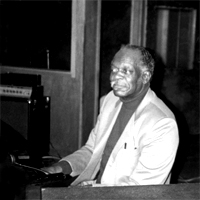
Hank Jones: Piano
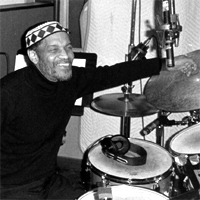
Billy Higgins: Drums
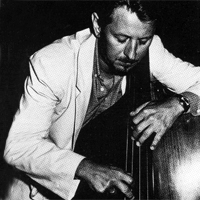
George Mraz: Bass
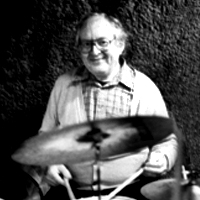
Mel Lewis: Drums
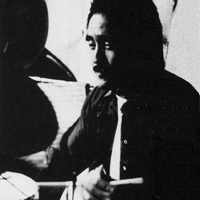
Akira Tana: Drums
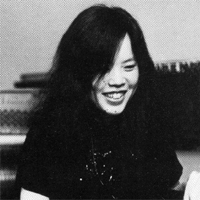
Susan Chen: piano
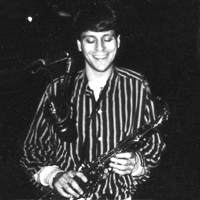
Greg Marvin: Tenor Saxophone
